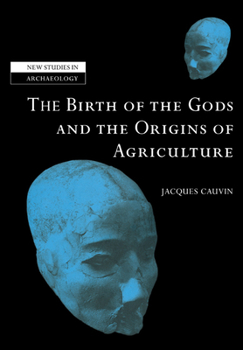The Birth of the Gods and the Origins of Agriculture
Select Format
Select Condition 
Book Overview
Jacques Cauvin has spent many years researching the beginnings of the Neolithic in the Near East, excavating key sites and developing new ideas to explain the hugely significant cultural, social and economic changes which transformed mobile hunter-gatherers into the first village societies and farmers in the world. In this book, first published in 2000, the synthesis of his mature understanding of the process beginning around 14,000 years ago challenges ecological and materialist interpretations, arguing for a quite different kind of understanding influenced by ideas of structuralist archaeologists and members of the French Annales school of historians. Defining the Neolithic Revolution as essentially a restructuring of the human mentality, expressed in terms of new religious ideas and symbols, the survey ends around nine thousand years ago, when the developed religious ideology, the social practice of village life and the economy of mixed farming had become established throughout the Near East and east Mediterranean, and spreading powerfully into Europe.
Format:Paperback
Language:English
ISBN:0521039088
ISBN13:9780521039086
Release Date:August 2008
Publisher:Cambridge University Press
Length:288 Pages
Weight:0.95 lbs.
Dimensions:0.6" x 6.8" x 9.7"
Customer Reviews
1 rating
Julian Jaynes without the neurology
Published by Thriftbooks.com User , 21 years ago
This book can be a difficult read, especially for someone (like myself) with no formal training in archeology. There should have been some more maps..There is a valuable chronological table in the front matter -- Cauvin doesn't remind you to make reference to it as often as he might, but it IS there.On the whole, the book was an eye opener. Cauvin makes a powerful case that there was a revolution in the way people think that preceded the various material elements in the Neolithic revolution, circa 10,000 BC.First there came a consciousness of the divine -- goddesses showed up in carvings regularly enough to indicate a female monotheism. This consciousness caused humans in the valley of the Jordan and in the plain of Aleppo to think of themselves as different from the natural world around them -- the gazelles and goats we hunt don't pray to the goddess, but we do, so we are obviously a different sort of being than they. With that thought came a lot of others -- the deliberate cultivation of grain, the taming of those goats into herds, new sorts of architecture, including somne unnatural right angled corners. It was all coded, many millennia later, in Genesis. Recognition of one's "nakedness" before God. The end of the easy hunter/gatherer lifestyle. Then Abel and the cultivation of grain. Then Cain, his younger brother, and the cultivation of tame animals. But why did this new consciousness happen anyway? Cauvin doesn't offer any explanation. Julian Jaynes tried to offer one, decades ago (the "breakdown of the bicameral mind"), subsequent developments in neurology haven't been kind, and he seems to have had the chronology a bit off, too. Maybe the goddess just chose that moment to reveal herself.






